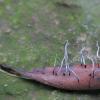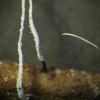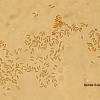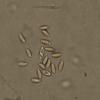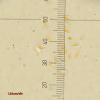
08-11-2016 19:52
 Stephen Martin Mifsud
Stephen Martin Mifsud
Dear friends. A common Xylaria here on the Maltes

08-11-2016 20:04
 Maren Kamke
Maren Kamke
Hi everybody,could anyone help me with a genus to

08-11-2016 11:06
 Jean-Louis JALLA
Jean-Louis JALLA
Bonjour à tous.Je "sèche" sur un petit asco. Et

08-11-2016 11:01
Iglesias PlácidoElle est sortie, la revue Errotari de cette année

31-10-2016 04:19
 Stephen Martin Mifsud
Stephen Martin Mifsud
Hi, I am challanged with a fungus I found on decay

26-07-2016 18:06
 Zuzana Sochorová (Egertová)
Zuzana Sochorová (Egertová)
Hello,a group of these fungi grew on soil in shelt

06-11-2016 22:43
 William Slosse
William Slosse
I found this brownish discomyceet on cowdung in a
Xylaria sicula ?
Stephen Martin Mifsud,
08-11-2016 19:52
 Dear friends. A common Xylaria here on the Maltes islands is that found on fallen olive leaves in humid and shaded areas. I took some specimens to educate and learn on this genus and following a key online: [http://pyrenomycetes.free.fr/xylariaceous/keydir/dichotomickey.htm]
Dear friends. A common Xylaria here on the Maltes islands is that found on fallen olive leaves in humid and shaded areas. I took some specimens to educate and learn on this genus and following a key online: [http://pyrenomycetes.free.fr/xylariaceous/keydir/dichotomickey.htm]I did not went into much work, because xylaria on olive leaves is quickly keyed out as Xylaria sicula.
When I checked the details I found one mismatching character, apart that the spores were on the lower end of the range. X. sicula should have a swollen fertile head close to the apex which I colud not see in my specimens.
Any feedback?
Jacques Fournier,
08-11-2016 21:06

Re : Xylaria sicula ?
Hi Stefen,
this is likely X. sicula but at conidial state. What you observed are conidiospores.
The sexual state will occur later and will be black, thus less conspicuous in the leaf litter.
Cheers,
Jacques
this is likely X. sicula but at conidial state. What you observed are conidiospores.
The sexual state will occur later and will be black, thus less conspicuous in the leaf litter.
Cheers,
Jacques
Stephen Martin Mifsud,
08-11-2016 22:53

Re : Xylaria sicula ?
Thank you very much Jacques, I understand perfectly. I will check carefully the leaf litter for capitate apices.

